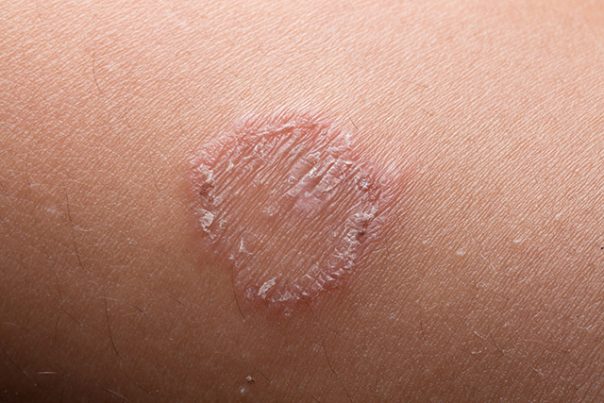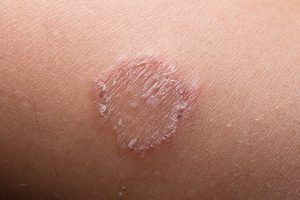
Tinea corporis – causes, side effects and treatments at NaturalPedia.com
Wednesday, July 04, 2018 by Ralph Flores
http://www.naturalpedia.com/tinea-corporis-causes-side-effects-and-treatments-at-naturalpedia-com.html

Tinea corporis is a fungal skin infection. In general, fungal infections that affect the skin, nails, and hair are sometimes called “tinea” or are more commonly known as ringworms – despite it being caused by a fungus and not a nematode.
Tinea corporis (also called tinea circinata) refers to ringworm of the skin, which forms a ring-like pattern on the skin. The disease is contagious, as it can be transmitted through direct contact with infected people or animals, as well as through contaminated objects, or even the soil.
There are different types of ringworm infections; these include:
- Majocchi’s granuloma – A fungal infection commonly seen in women who shave their legs.
- Tinea corporis gladiatorum – A ringworm spread by skin-to-skin contact between wrestlers.
- Tinea imbricata – An infection seen in Central and South America, Asia, and the South Pacific.

Known risk factors and symptoms of tinea corporis
Tinea corporis is not predisposed to a certain age, race, or sex. However, people who have a higher risk factor include:
- Those who have come in contact with an infected person
- People who have another ringworm infection in their bodies, such as tinea capitis (scalp), tinea faciei (face), tinea barbae (beard area), tinea cruris (groin), tinea pedis (feet), or tinea unguium (fingernails or toenails)
- Athletes, especially those in contact sports
- Individuals who are in frequent contact with animals
- Those with compromised immune systems
- People who sweat heavily
- Residents of warmer, more humid climates
Clinical symptoms of tinea corporis include the presence of red ring-shaped patches that have a raised, scaly border. At times, the patches can lead to blisters, bumps, or scabs. People with weakened immune systems may feel symptoms of itching and burning. Typically, the most common locations of ringworms are the neck, arms, legs, and trunk.
Body systems affected by tinea corporis
The following complications are caused by tinea corporis infections.
- Spread of infection to other regions
- Permanent scarring
- Recurrence
- Other skin disorders
Food items or nutrients that may prevent or relieve tinea corporis
Some food items that can be consumed to treat, or even prevent, tinea corporis infections include:
- Garlic. The active ingredients in garlic, namely, allicin and ajoene, make it a natural antifungal ingredient. It can be consumed, or a paste can be applied topically on the affected area.
- Apple cider vinegar. It can both be consumed or used topically to treat ringworm and other skin conditions effectively.
- Turmeric. Applying fresh turmeric juice on the affected areas unlocks its antibiotic properties.
- Lemongrass tea. Drink a glass three times a day, then apply the used tea bags to the affected areas to make a one-two punch against ringworm infections.
Treatment and management options for tinea corporis
Here are some natural treatments to relieve and prevent tinea corporis infections.
- Practicing good hygiene is essential to stop the spread of infection in other areas of the body. These include regular bathing and drying, as well as avoiding sharing of towels with others.
- Applying tea tree oil to the affected area can kill the fungus responsible for the infection.
- Coconut oil, when used areas affected by ringworm, can naturally fight the infection and relieve itchiness.
- Neem or Indian lilac is a potent antiseptic that can treat ringworms in the body.
Where to learn more
- Use Natural Cures for Tinea, or Fungal Skin Infections
- 15 Natural Home Remedies for Ringworm
- NaturalCures.news
- EssentialOils.news
- Herbs.news
Summary
Tinea corporis is a fungal skin infection.
Tinea corporis forms a ring-like pattern on the skin.
Tinea corporis is contagious, and it can be transmitted through direct contact with infected people or animals, as well as through contaminated objects, or even the soil.
Tinea corporis is not predisposed to a certain age, race, or sex.
Symptoms of tinea corporis include the presence of red ring-shaped patches that have a raised, scaly border.
Practicing good hygiene is important to stop the spread of tinea corporis in other areas of the body.
Sources include:
Tagged Under: Tags: Tinea corporis





